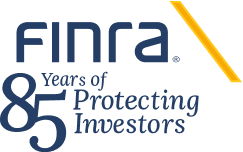Mutual Fund Breakpoint Assessment Q&A
Below are questions and answers regarding the Mutual Fund Breakpoint Assessment.
1. When counting transactions to determine whether our firm qualifies for the de minimis exemption, how should the following situation be handled? If a customer invests $100,000 in five mutual funds ($20,000 each) in the same fund family on the same day and pays with one check, is this one or five transactions?
This should be considered as five transactions when counting transactions to determine whether the firm qualifies for the de minimis exemption provided in the assessment.
2. While conducting the self-assessment we uncovered transactions that are not part of our Sample in which customers were eligible to receive a breakpoint discount but did not get one. What should we do with these non-sample transactions?
Record these problem, non-sample transactions on a second, separate firm schedule. Do not include them with the transactions being submitted to NASD. Eventually, the firm will be instructed to in some manner reimburse customers for all identified transactions in which customers were not provided available sales charge discounts – regardless of whether those transactions were part of the sample or were non-sample transactions that were disclosed and separately recorded while performing the assessment. This secondary schedule of problem, non-sample transactions must be retained by the firm. It will be reviewed during follow-up NASD audits.
3. Step 2 of the assessment requires firms to report annual income earned from the sale of Class "A" shares for the years 1998 through 2002. What income sources should be included in the determination of reportable revenue from these transactions?
Only gross, dealer concessions earned from the sale of Class "A" shares to customers should be reported for each of the five years requested in Step 2 of the assessment. Other sources of Class "A" share income, such as 12b-1 fees and ticket charges, should not be included.
4. What does the term "automated purchases" mean with respect to the assessment?
For the purpose of this assessment, the term "Automated Purchases" refers to customer purchases of front-end load Class "A" shares that your firm executed and settled in a brokerage account or through your clearing firm during the calendar years ended December 31, 2001, and December 31, 2002. Automated Purchases include transactions that are effected through Fund/SERV either directly by your firm or indirectly through your clearing firm. The term "Automated Purchases" is specifically defined for purposes of this assessment and is distinct from any other usage of that term, such as the same or similar term used in connection with a contractual plan.
Automated Purchases do not include transactions completed directly with a mutual fund by means of an application (often referred to as "application-way") or by telephone.
5. Should customer transactions effected on an application basis be included in the assessment?
No. Only those transactions cleared through your firm or through your clearing firm in a brokerage account should be included in the assessment sample. Customer transactions executed directly with a mutual fund on an application basis should not be included in the assessment.
6. Why do I have to enter the actual sales charge in field 31 when the web-form automatically calculates it in field 30?
The calculated sales charge percent may include minor rounding errors that can affect the calculated dollar sales charge to the customer. By entering the actual sales charge percent that is contained in a fund’s prospectus, the dollar sales charge calculations are accurate.
7. I have my automated purchases segregated in a spreadsheet. Is there a way for me to upload the spreadsheet into the assessment form?
No. Transactions must be entered manually.
8. My firm is a mutual fund distributor and conducts no business directly with retail clients. Do I need to complete the assessment?
No. Pursuant to the self-assessment instructions, wholesale transactions do not meet the definition of "automated purchases" and are not part of the assessment.
9. Should exchanges (switches within the same fund family) be counted in the total number of automated purchases in the assessment?
The answer depends on whether the customer incurred a sales charge on the exchange. If the purchase side of the exchange were completed at net asset value, the transaction would not count towards the 100 automated purchases in Step 1 of the assessment. If the purchase side of the exchange incurred a sales charge, the transaction would be includable in the total number of automated purchases.
10. Should the actual sales charge percentage (field 31) be based on the amount that the firm receives as a concession?
No. The actual sales charge percentage that the firm is required to enter is the total sales charge paid by the customer. The actual sales charge percentage is composed of two parts: the first and largest part is the dealer concession that member firms will receive; the other, usually smaller part, is the mutual fund distributor's fee. Firms must add both parts when calculating the sales charge percentage, which can be found in the fund's prospectus and should be very close to the percentage automatically computed in the estimated sales charge % (field 30).
